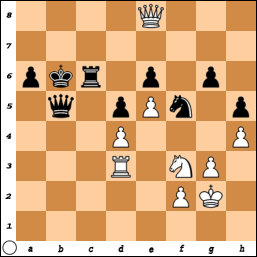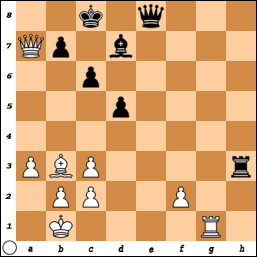Chess Videos
Chess Tools
Other
Book Review: Improve Your Chess in 7 Days by Gary Lane
Ideal audience: Club players, 1800 ELO and below. It is, however, a fun read for players of all strengths.
Pros: Entertaining examples, easy to read, excellent chapter on the endgame.
Cons: the discussion of "positional play" is somewhat lacking.
Rating: 4 out of 5 pawns.
"this book is designed to make you think, improve your play, and win more games."
IM Gary Lane's Beating the French was one of my first chess books. I won it as a scholastic book prize at a local tournament, and while the book's detailed opening analysis was lost on me, I did enjoy Lane's writing. Now, ten years later, I'm reviewing Gary Lane's most recent offering, Improve Your Chess in 7 Days, and I'm wishing it had been the book I'd received so many years previous. It would have taken me more than 7 days to read, but I would've had a lot of fun, and certainly improved my chess.
Lane has divided his book into 7 chapters, which the title suggests should be read during the course of a week. A stronger player will only need a few days, while a weaker player will need more than a week, but the book is a quick read either way. On Day 1, "So you want to improve your chess?", Lane covers a variety of topics like choosing a move, the relationship between strategy and tactics, and the basics of creating an attack. These subjects are covered more in-depth later, and I'd accuse the chapter of being unfocused if it didn't spoil me with fresh and surprising examples from recent tournament games. Lane introduces the importance of tactical motifs by comparing two recent tournament games:
 |  |
| Vallejo Pons - Perelshteyn, 1999 | Pintor- Leite, 2002 |
Vallejo Pons won with the surprising 33.Rb3 when the black queen is lost after 33...Qxb3 34.Qb8+. Three years later, Pintor won with the same idea (see if you can spot it).
Examples like this are peppered throughout the book, and I appreciate that Lane has found games with instructive and easy-to-follow positional and tactical ideas. They are perfect for the developing player.
The remainder of the book is filled with even more entertaining (and fresh) illustrations of Lane's ideas. My favorite section is "Mastering the Endgame." It's an excellent primer on beginning endgame play. Lane's discussion of rook and pawn endings is especially instructive as he explores key positions of increasing complexity before revealing how they can inform one's practical endgame play. In so doing, Lane bridges the gulf between theoretical and practical beautifully. He even includes an enlightening analysis of a relatively complex endgame: queen and king vs. rook and king. Here Lane deftly balances concern for the beginner's understanding with the goal of providing quality analysis for stronger players.
| My only qualm about the book is that its discussion of positional play is a little sparse. In fact, tactical fireworks frequently overshadow Lane's discussion of positional chess. The complexities of positional play, however, are probably outside the scope of the book. Furthermore, the section is very entertaining, and my complaint is only that I would've appreciated a little more on the subject. Gary Lane's Improve Your Chess in 7 Days is ideal for improving players. The book's analysis is not overwhelming, and the engaging writing and well-chosen examples keep the reader turning the pages (something most chess books fail to accomplish). For this reason, I think Improve Your Chess in 7 Days would make a great gift for someone making the transition from wood-pusher to club player. |
You can discuss this review as well as share your thoughts about the book here.




